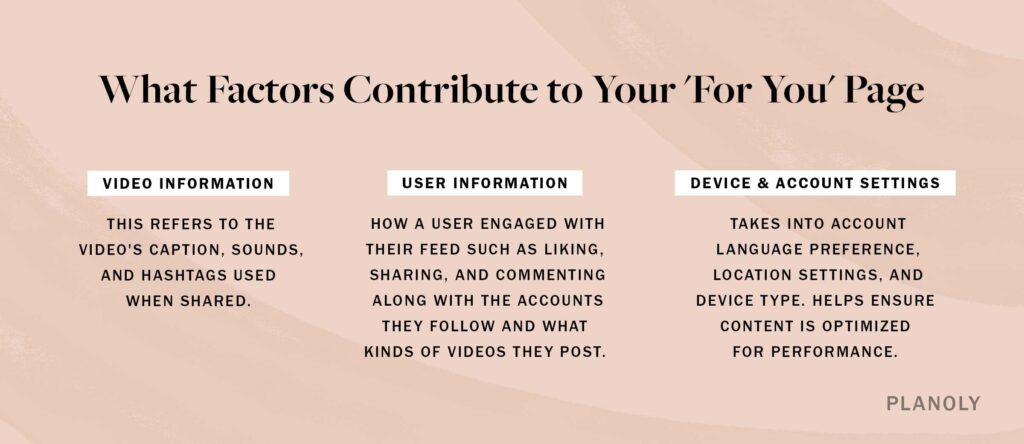TikTok

Social media has evolved from words (Facebook), to images (Instagram and Snapchat), to now with the rise of TikTok, videos. TikTok is a short-form video sharing platform that allows users to create and view content and captures value through advertisements. TikTok has been successful due to its approach to content creation and the strength of its algorithm. This post will explore how these two elements have allowed the platform to create value for its users, thus earning it scale and sustained popularity.
Social media has evolved from words (Facebook), to images (Instagram and Snapchat), to now with the rise of TikTok, videos. TikTok is a short-form video sharing platform that allows users to create and view content and captures value through advertisements. TikTok has been successful due to its approach to content creation and the strength of its algorithm. This post will explore how these two elements have allowed the platform to create value for its users, thus earning it scale and sustained popularity.
Addictive Algorithm
TikTok has found a way to keep users on its app for hours at a time (80 minutes on average), which is an impressive feat considering the ever-shorter attention spans we have these days. It has achieved this by serving an infinite pool of bite-sized content that it knows will hook the user through its unique algorithm.
The TikTok algorithm uses artificial intelligence to learn user preferences and tailor the content delivered accordingly. It collects data about its users from the moment they download the app. Device and account settings are used to collect location, language, device type, and other information to create an initial profile. As users interact with the app further the platform accounts for account follows, video likes and comments, how long videos are viewed for, and explicit feedback like reporting content to refine its algorithm. It also accounts for demographic similarities to use data from other users to supplement an individual user’s profile. For example, trending topics, hashtags, filters, and sounds will appear on your “for you page” even if not explicitly signaled as a compatible video from your profile.


Content creation
But just as important as keeping users viewing the content is ensuring that there is content to view. TikTok has taken a unique approach to developing content. It has removed many of the barriers that may prevent users from creating videos.
First, the platform makes it very easy to film, edit and upload content from the app. You do not need to be familiar with filmography or advanced editing software to be able to produce on Tiktok. You can choose from a library of sounds and music, use built in filters and editing tools, and post quickly from a mobile device.
Of note is the fact that TikTok has a large library of copyrighted music for users to include in their videos. This has made TikTok a vital platform for musicians, who are often the subject of trends or dances which go viral.

Second, it removes the barrier of creativity for uploading videos. The capacity to support trends, remix videos, and video responses makes it easy for users to come up with ideas for content. The platform encourages trial and error. Users with no established follower base can go viral on a single video due to the algorithm’s lack of preference for accounts with large following. This means that TikTok relies on its viewer base to also serve as its creator base.
Finally, the platform rewards virality and the creation of popular content. TikTok established the Creator Fund which users are eligible to join if they have 10,000 followers and have received 100,000 views in 30 days. The platform has committed to creating a pool of $1 billion over the next 3 years for the Creator Fund.
Given the rise and fall of other forms of social media, the long-term sustainability of TikTok is still in question. However, given estimates that TikTok’s website was visited more often than Google last year, it has undeniably reached a level of scale that few other social media platforms have achieved.
Sources:
https://www.washingtonpost.com/technology/interactive/2022/tiktok-popularity/
https://www.forbes.com/sites/tomtaulli/2020/01/31/tiktok-why-the-enormous-success/?sh=7d1def7165d1



Really enjoyed your post! As someone who is a captive TikTok user, I find it interesting to learn how the algorithm and machine learning behind the platform work. I think TikTok’s true success is due to its ability to cater to both directions of the two-way platform. It not only provides the music library and interface for content creators, but it also caters content to viewers to increase the level of engagement and viewing. I have to wonder whether TikTok is a social media fad or if it is a sustaining interface.
Hi Nitya, thanks for sharing this! I believe TikTok is one of the most powerful social media platforms nowadays, and it might become the number 1 in the future. It’s impressive everything they have achieved in such a short period of time, allowing the creation of millions of videos by people of all ages, and I think there is still room to exploit more from all the data it collects from users. I would only be concerned about the ethical implications of using this app; the algorithm is created to make the app addictive and promote spending hours in the platform. This could be even more harmful for the younger audiences which are more susceptible to expose themselves in these platforms.
As a non-user, I hear about how addictive, accurate and sometimes niche their algorithm is, so it’s good to get a glimpse from the outside how the algorithm is doing the magic!